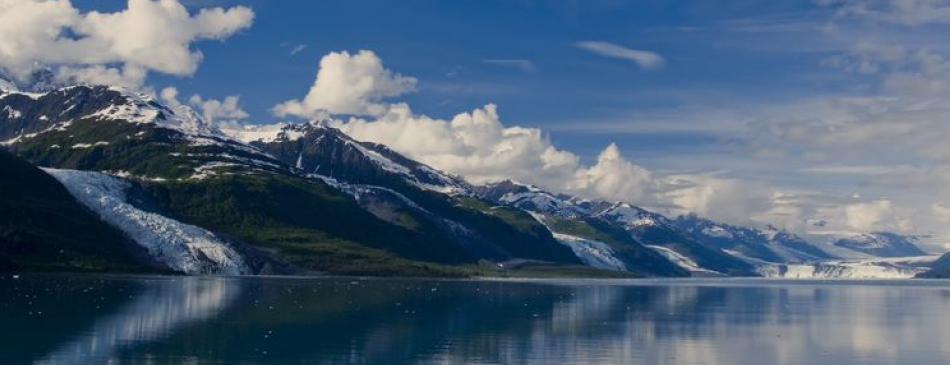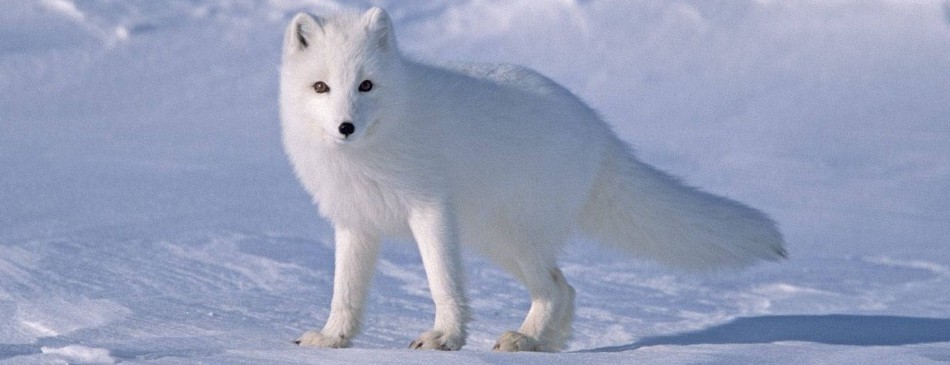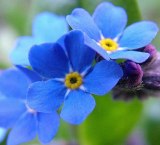Ecosystems in Alaska range from grasslands, mountains, and tundra to thick forests, in which Sitka spruce (the state tree), western hemlock, tamarack, white birch, and western red cedar dominate the landscape. Various hardy plants and wild flowers spring up during the short growing season on the semiarid tundra plains.
Muskegs are wet, peaty areas that cover large areas of flat to gently sloping terrain in southern and southeastern coastal Alaska. Like a soggy blanket draped over the landscape, muskeg, or peat bog, covers more than 10 percent of southeast Alaska. It provides a surprisingly fragile home for an abundance of plants that thrive in the wet, acid soil. During the summer, the flowers on many of them add a carpet of soft color to the muted greens and browns typical of muskeg. The water level in muskeg is usually at or near the surface. Stepping on muskeg is like stepping on a sponge, and walking across it involves avoiding the multitude of open ponds that range in size from potholes to small lakes. Despite their innocuous appearance, muskeg holes can be more than just messy - they can be dangerous. Some are quite deep and offer no toeholds to help the unwary climb back out.
There are about 1,700 types of plants in the Alaskan Tundra. What most of them have in common are growth characteristics; they tend to grow low to the ground. The long day length that accompanies the short summer is a boon to plants, which are able to photosynthesize 24 hours a day in some places. This leads to rapid plant growth. Among the common types of tundra plants are willows, sedges and grasses, many in dwarf forms compared to their growth forms in warmer climes. Lichens and mosses are also important, particularly in the harshest climates. Lichens are composite organisms made up of both a fungus, which provides structure, and an algae, which synthesizes chlorophyll for food. One lichen commonly found in the Arctic tundra is caribou moss, also known as reindeer lichen. This drought-resistant organism appears on rocks as a spongy gray-green foam.
The plant life of the Aleutians relies on the sea. In a place where there are millions of birds, but no trees, endemic Aleutian grasses, flowers, and shrubs rely on seabird guano to fertilize growth. The islands have unique vegetation unlike any other on earth, with a mingling of plant immigrants from east and west, survivors from Beringia, believed to have been an ancient land bridge connecting the two continents. Goldenrod, lupine, kinnikinnick and yarrow arrived from North America to the east. Iris, purple orchid, Kamchatka rhododendron and Chukchi primrose came from Asia to the west. Some species extend into both ends of the Aleutian chain, but have not yet reached the middle islands. On Unalaska, 120 different types of wildflowers bloom in the course of the summer, including a bluebell or harebell found only in Japan and the Aleutians and a dozen species of wild orchid.
The taiga is a forest with trees of moderate height and the biome has low species diversity. It is a low elevation forest that extends over large distances and is interrupted by lakes, ponds, and moss-covered bogs. Many species of evergreen and deciduous shrubs are present but cover is modest, and the ground layer is dominated by feather mosses, lichens, and ferns – the forest is essentially a two-layered community.
Native plants are an important addition to any wildlife garden. They are well adapted to survive in a particular geographic area according to the climate, soils, rainfall and availability of pollinators and seed dispersers. Because they are indigenous to a specific region, native plants usually require less maintenance and are welcomed by wildlife, serving an important role in the local ecosystem. While a plant is native to a region, that does not mean that it will grow everywhere in that region. The characteristics of any site will typically vary from place to place and some plants may do better than others at various places within a site. In other words, a little experimentation might be required.
A small subset of introduced plants are “invasive.” Invasive species are typically recognized as non-native species that once introduced accidentally or on purpose, spread beyond control to affect natural and agricultural resources or human health. People and vehicles generally spread invasive plants from human habitation centers outwards along transportation routes (roads, airports and float ponds, trails and rivers) as they move materials and goods. Not all non-native species are invasive, and many are highly beneficial for agricultural or ornamental purposes.
|
|








